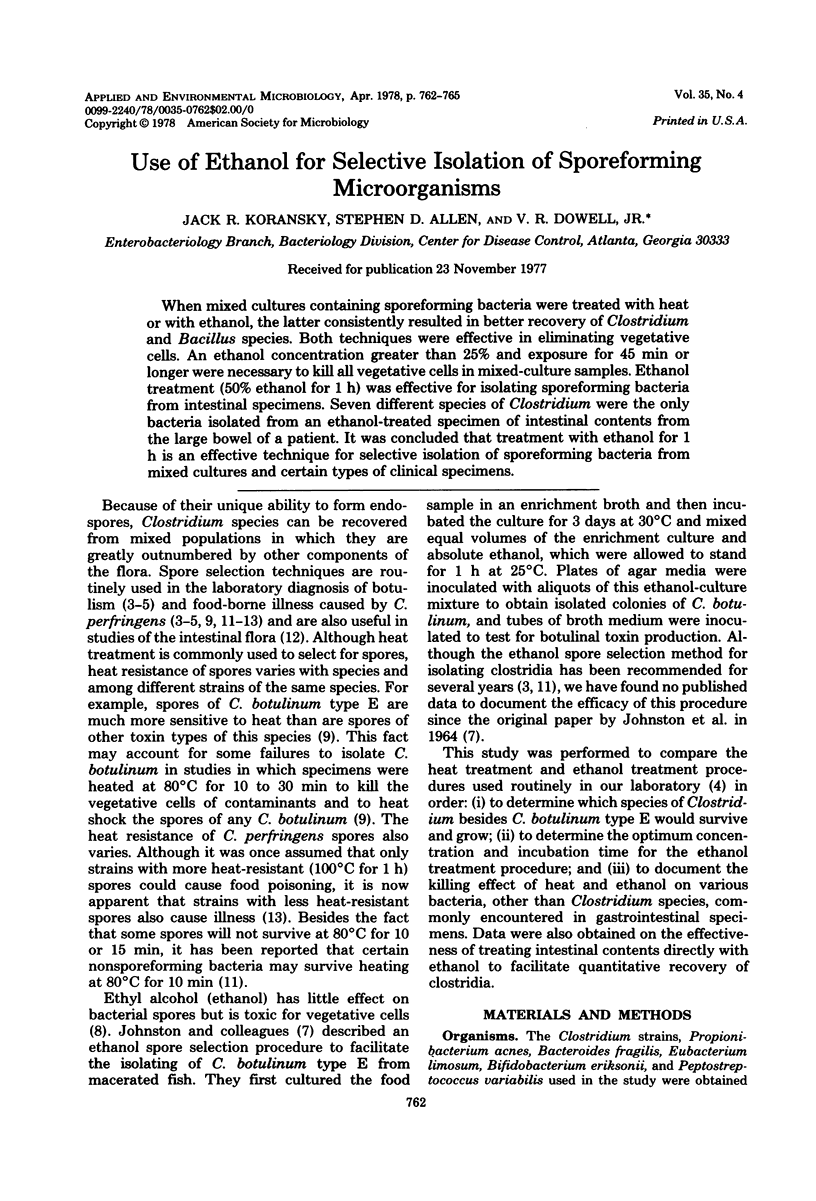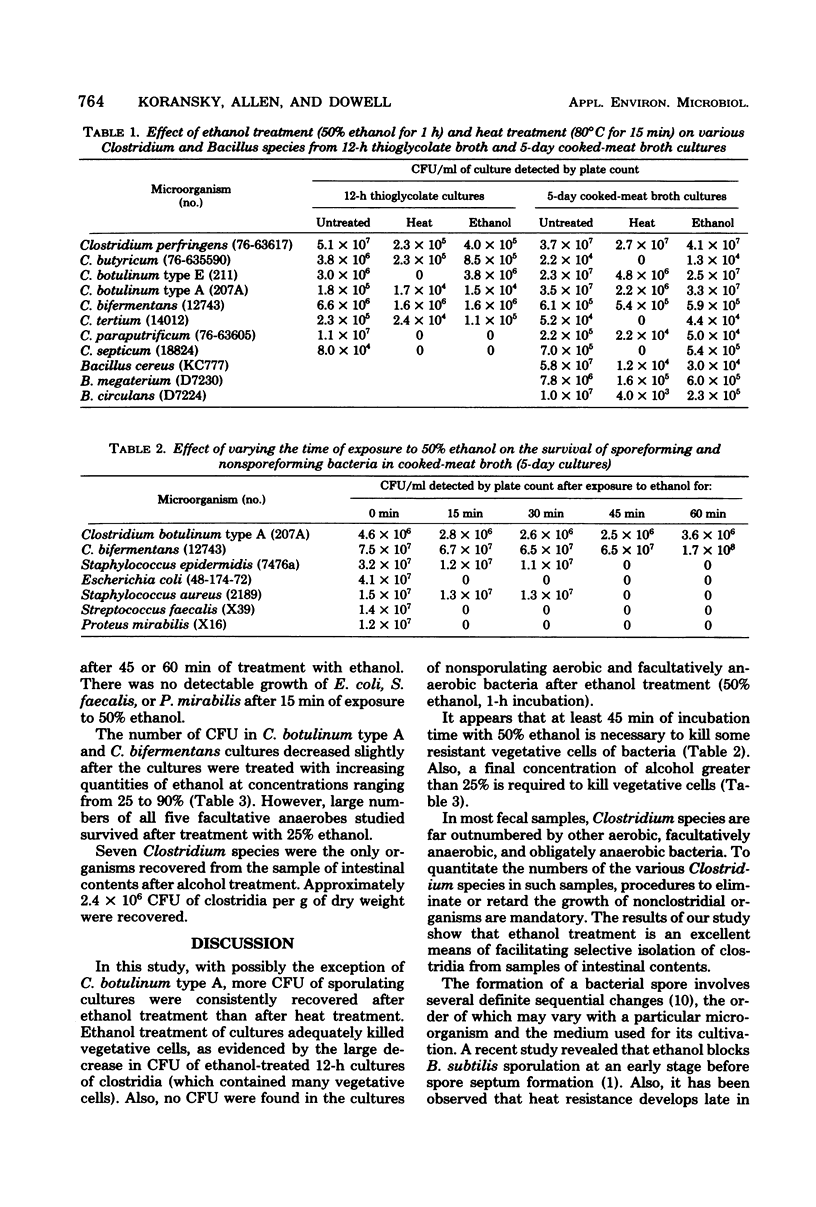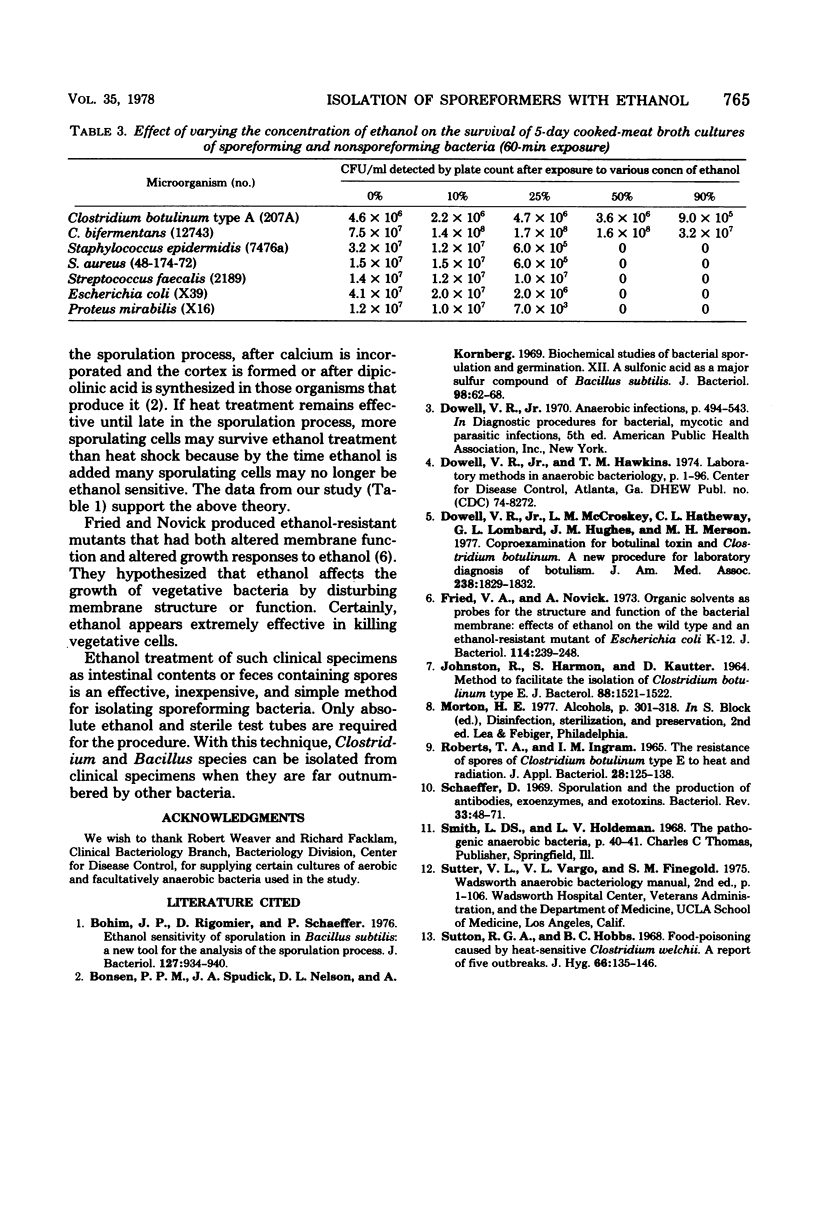Abstract
When mixed cultures containing sporeforming bacteria were treated with heat or with ethanol, the latter consistently resulted in better recovery of Clostridium and Bacillus species. Both techniques were effective in eliminating vegetative cells. An ethanol concentration greater than 25% and exposure for 45 min or longer were necessary to kill all vegetative cells in mixed-culture samples. Ethanol treatment (50% ethanol for 1 h) was effective for isolating sporeforming bacteria from intestinal specimens. Seven different species of Clostridium were the only bacteria isolated from the ethanol-treated specimen of intestinal contents from the large bowel of a patient. It was concluded that treatment with ethanol for 1 h is an effective technique for selective isolation of sporeforming bacteria from mixed cultures and certain types of clinical specimens.
Full text
PDF



Selected References
These references are in PubMed. This may not be the complete list of references from this article.
- Bohin J. P., Rigomier D., Schaeffer P. Ethanol sensitivity of sporulation in Bacillus subtilis: a new tool for the analysis of the sporulation process. J Bacteriol. 1976 Aug;127(2):934–940. doi: 10.1128/jb.127.2.934-940.1976. [DOI] [PMC free article] [PubMed] [Google Scholar]
- Bonsen P. P., Spudich J. A., Nelson D. L., Kornberg A. Biochemical studies of bacterial sporulation and germination. XII. A sulfonic acid as a major sulfur compound of Bacillus subtilis spores. J Bacteriol. 1969 Apr;98(1):62–68. doi: 10.1128/jb.98.1.62-68.1969. [DOI] [PMC free article] [PubMed] [Google Scholar]
- Dowell V. R., Jr, McCroskey L. M., Hatheway C. L., Lombard G. L., Hughes J. M., Merson M. H. Coproexamination for botulinal toxin and clostridium botulinum. A new procedure for laboratory diagnosis of botulism. JAMA. 1977 Oct 24;238(17):1829–1832. [PubMed] [Google Scholar]
- Fried V. A., Novick A. Organic solvents as probes for the structure and function of the bacterial membrane: effects of ethanol on the wild type and an ethanol-resistant mutant of Escherichia coli K-12. J Bacteriol. 1973 Apr;114(1):239–248. doi: 10.1128/jb.114.1.239-248.1973. [DOI] [PMC free article] [PubMed] [Google Scholar]
- JOHNSTON R., HARMON S., KAUTTER D. METHOD TO FACILITATE THE ISOLATION OF CLOSTRIDIUM BOTULINUM TYPE E. J Bacteriol. 1964 Nov;88:1521–1522. doi: 10.1128/jb.88.5.1521-1522.1964. [DOI] [PMC free article] [PubMed] [Google Scholar]
- Schaeffer P. Sporulation and the production of antibiotics, exoenzymes, and exotonins. Bacteriol Rev. 1969 Mar;33(1):48–71. doi: 10.1128/br.33.1.48-71.1969. [DOI] [PMC free article] [PubMed] [Google Scholar]
- Sutton R. G., Hobbs B. C. Food poisoning caused by heat-sensitive Clostridium welchii. A report of five recent outbreaks. J Hyg (Lond) 1968 Mar;66(1):135–146. doi: 10.1017/s0022172400041000. [DOI] [PMC free article] [PubMed] [Google Scholar]


